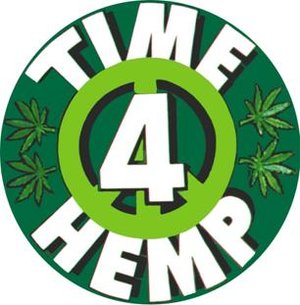The Global Hemp Industry Is Growing
Hemp Is Mother Nature’s Gift To Humankind
Cannabis Hemp In 2024: January's News You Missed.
You can listen to a great podcast about the budding global hemp industry with: Anndrea Hermann, Summer Star Haeske, Boris Banas, Greg Flavall, Chris Federowich, and Teri Wallace - just by clicking here.
Everything Old Is New Again - Including Industrial Hemp
Written by Casper Leitch
The reemergence of industrial hemp, facilitated by State pilot programs, signifies a potential boon for a crop once prevalent in the United States during the 1920s. Industrial hemp, recognized for its multi-functional properties in fiber, seed, oil, and the increasingly popular cannabidiol (CBD) oil, belongs to the Cannabis sativa L. plant species. Notably, industrial hemp contains minimal levels of delta-9 tetrahydrocannabinol (THC), the psychoactive compound found in marijuana. The distinction between industrial hemp and marijuana was pivotal in legalizing hemp production in the United States. Subsequently, production levels surged, attracting new entrants to the market.
From non-existent acreage in 2013, industrial hemp acreage reported by State pilot programs skyrocketed in America to over 90,000 acres in 2018, marking the highest acreage since 1943 when 146,200 acres were harvested. This exponential growth, spurred by the legalization of commercial hemp production in the 2018 Farm Bill, paints an optimistic picture. However, uncertainties loom regarding the long-term economic sustainability of the industry.
State Pilot Programs For Hemp Cultivation
State pilot programs played a crucial role in precipitating rapid growth in the hemp industry. The revival of the U.S. industrial hemp industry commenced gradually before gaining momentum, as evidenced by the comparison of U.S. hemp acreage across different data sources. In 2014, only four states (Colorado, Indiana, Kentucky, and Vermont) reported hemp cultivation, with Colorado dominating the landscape. While additional states were in the process of developing regulations and licensing procedures, Colorado accounted for a significant portion of the acreage. Although some early pilot programs remained experimental, others, such as those in Colorado, Kentucky, and Oregon, swiftly expanded their programs, licensing individual growers. By 2018, 22 states reported hemp cultivation on a substantial scale.
Intriguingly, certain states licensed both greenhouse space and field acreage in their pilot programs, reflecting the industry's diverse cultivation methods. For instance, in 2018, 13 states exclusively reported field production, while nine additional states reported both field and greenhouse growers. Greenhouse plantings witnessed rapid growth between 2014 and 2018, with Colorado alone boasting nearly 5 million square feet of greenhouse hemp by 2018.
Looking Through The Haze Of Hurdles
Despite the surge in the number of producers obtaining hemp licenses, many faced challenges, including legal and logistical hurdles such as seed availability and uncertainty in production methods. Consequently, not all licensed producers utilized their licenses to their full extent. However, the doubling of approved licenses between 2017 and 2018 underscores the burgeoning interest in hemp production.
A significant challenge encountered during the pilot programs was the scarcity of information essential for making informed decisions in the hemp industry. The lack of data on production and market dynamics, including agronomic best practices and profitability comparisons with alternative commodities, posed risks for industry stakeholders. Moreover, the absence of data on the size and location of growers, buyers, and competitors exacerbated these challenges, making it difficult for producers to identify suitable buyers and processors.
The Growing Global Hemp Industry
On a global scale, the resurgence of hemp production in the United States coincides with its legalization in other parts of the world. Historically, global hemp production remained modest until the recent surge in demand for CBD oil, driven by its perceived health benefits. Despite the initial legality of hemp production in other countries, the United States imported raw and processed hemp and hemp oil. Major foreign hemp-producing regions, including Canada, Europe, and China, could potentially emerge as formidable competitors for the U.S. hemp industry.
Canada serves as a relevant model for the U.S. hemp industry, having developed a robust hemp sector two decades prior. Similarly, Europe, with its centuries-old hemp industry, is experiencing a resurgence, driven by increased demand for organic seed and CBD oil products. China, likely the world's largest industrial hemp producer, boasts extensive expertise and low-cost production capabilities.
The evolution of the U.S. hemp industry, facilitated by the 2014 Farm Bill and subsequent regulations, faces challenges, including the lack of reliable data and research. Market dynamics are expected to evolve rapidly, influenced by competition from alternative crops and international markets. Ultimately, the ability to manage regulatory and market risks will shape the trajectory of the emerging U.S. hemp industry.
Below is a FREE TO DOWNLOAD marijuana music MP3 by Charlton Woolfolk, Jr.
The Marijuana Polka
The USDA has sent thousands of surveys to hemp farmers to gain a better understanding of the industry's growth and challenges.


